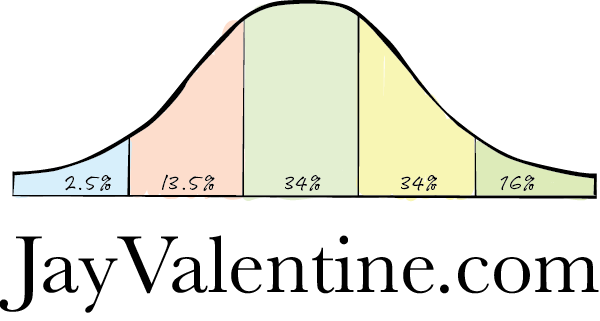
VMware wakes up every couple of years, like the guy in Sleepy Hollow, and finds the world is no longer virtualization-only. In 2013 it awoke to the fact that the cloud was a next big thing and VMware’s customers were fleeing to Amazon and Azure.
Off went VMware, spending billions of V-Sphere profits, building data centers while breathlessly announcing they were going to bring “the cloud” to the VMware customer base.
Not much later, VMware quietly closed down that hot new strategy and said, “….well, maybe we got that wrong. Better to partner with the cloud leaders.”
Today, the hot new thing, now that the Software Defined Whatever appears a bit less their message, is VMware leadership in the Kubernetes market!
Wow, what’s that? Sounds pretty cool and certainly far sexier than virtualization.
Kubernetes is an orchestration platform to build stuff in containers. It is a big deal because it enables development of micro service based apps that are generally cleaner, easier to build and can be used as building blocks for other, bigger apps.
Kubernetes is app development. VMware is data center plumbing.
VMware is the plumbing supply shop for the corporate IT world. VMware builds the low level server layer enabling one server to run many apps. Plumbing, but good stuff. Great profits; starting to struggle. Everyone has most of the virtualization they need.
Virtualization requires data centers. “The Cloud” means using someone else’s data center.
Thus, the need for a new VMware story. Grab the tech blog!
Kubernetes is hot. The tech blogs are saying it so it must be so!
VMware’s problem is Kubernetes’ apps are moving to either a bare metal (thus no virtualization box) or a super light virtualization box. Oops, no VMware! In either case, the VMware people are pretty much screwed going forward.
Remember VMware’s core management strategy: Wake up, read the tech blogs, see what the hot new thing is, and jump on it applying more PR than real value add technology. VMware’s entry into the cloud market, above, being a recent example.
Let’s take a tour away from cool sounding technology terms and apply a bit of common sense to VMware succeeding enough in the Kubernetes container world.
First, the Kubernetes world is app dev and not IT hardware/software plumbing.
The VMware sales force has led a happy, fat life for almost a tech generation as the order takers to the IT technical staff. Broadcom saw this when they bought VMware. Broadcom immediately stated they could increase VMware’s margins 80%. Sure, just get rid of this useless sales force.
VMware has this creature called a “core rep.” That person, hired for abilities to take direction rather than critically reason, is handed a list of accounts. Those accounts, and not the core rep’s talent, determine if that core rep is successful or not.
A core rep “owns” that account. And do they ever own it!
Their entire income is dependent on what that client does.
Core reps are driven by quarterly revenue – DRIVEN being the important word. If it isn’t happening this quarter, the transaction does not exist. This is a fundamental reason why VMware will fail in a market that does not fit nicely into quarterly forecasting.
Core reps sell the plumbing stuff, not app dev stuff. A VMware core rep has probably never seen an app dev executive except in a training brochure.
The VMware core sales teams need to learn a new language and entirely new way of selling to sell in the app dev space. They are not selling alone anymore, like they did in virtualization.
VMware faces a market where it has zero market penetration (Kubernetes, app dev, containers) with a sales force that has sold for decades to a constituency where it had 97% market penetration. Again, this is order taking.
Order taking is easier than selling complex technology when one is NOT the market leader.
VMware will quickly learn its technically illiterate core reps cannot get it done. This happens all the time at VMware with new offerings. So they will hire “specialists” whose job is to be super knowledgeable in Kubernetes.
OK, so now the specialist wants to sell to BIG COMPANY X. They want to start a sales cycle that is massively competitive, will take months to close, requires calls all over the organization.
Then, the core rep wakes up and the real trouble starts.
“Wait, I have a deal for virtualization and cloud stuff closing in 3 weeks! I do not want you in the account screwing up my close cycle!
This happens again and again at VMware and it is why they have been so unsuccessful bringing in products that are more difficult to sell than V-Sphere.
Critical thinking suggests the VMware sales force just ain’t going to get it done.
VMware will spend billions on training, all kinds of sales battle cards, SPAMMING app dev types, but the needle won’t move much. Industry analysts, not the Gartner types who reprint your press releases if your marketing budget is large enough, but the ones who lurk on those investor calls, will demand the rev from Kubernetes.
Ouch! When VMware has to report those Kubernetes revs are not there, and they will, the story breaks down. All tech stories eventually fail if there is no revenue. Ask Theranos, WeWork and a host of others.
But there’s more. VMware, as all monopolies do, has generated quarterly revenues forecast to the third decimal point accurately for years. Since they had incredible leverage over their virtualization customer, they could deliver predictable revenue – quarterly.
App dev deals are not a quarterly revenue kind of thing. App dev projects, particularly where VMware is one of many vendors, will happen when they happen. The great quarterly revenue forecasts die in a forest of competition, cross claims, demands for “show me” how you have done this before.
Don’s believe me?
Well, VMware is telling us they are going to use the Pivotal technology and sales teams to lead the way.
Really? Those same Pivotal folks, many or most of whom are former VM-ers, so missed their quarterly numbers the stock tanked over 50% from its IPO. Things were so bad, probably getting worse, that VMware bought the place using its Dell-mandated cash/borrowing capability. Then when Dell sucked all the financial jiggering they could from VMware, they sold it to Broadcom – today’s bottom fisher.
VMware is betting the Pivotal guys and gals and the VMware plumbing core sales teams can deliver manifestly growing revenues, every quarter, when they just showed they could not do it post IPO. Critical thinking suggests this is not going to happen.
There is another issue here, and it inherent to VMware’s strategy of reading the tech blogs for its direction.
Following the tech blogs gets VMware into a fight way too late!
VMware people are data center, legacy software, move to the cloud types. Most current corporate IT people are. Nothing wrong with that.
Except there is a growing uneasiness in the Fortune 1,000, quite pronounced in the Fortune 100, that moving to the cloud does not change anything. Companies are finding that moving to the cloud is a massively expensive endeavor and when they get there, their apps run generally the same.
Some execs call it “moving our crappy apps to the cloud where they run just like they did before – crappy!.”
In conversation after chat with cloud sales types, there is the continual refrain that their customers are not achieving “digital transformation” via the cloud. Nor are they getting transformation with micro services or containers!
They are achieving app migration with a cost profile similar to having the apps in their own data center.
In short, the industry’s dirty little secret is that moving apps to the cloud is migration. It just ain’t anything close to transformation.
Why is this?
The defining characteristic for an app’s performance is the tech stack that it sits on. OK, let’s go back to Kubernetes and VMware here. You remember, Kubernetes, that container stuff.
Kubernetes/container apps do not run much faster in the cloud than they did in the data center. They can be written in a bit shorter time, and modified more quickly, but not appreciably much.
Pivotal tools, you remember them from 6 paragraphs ago, cost tons of money, like a million dollars is common. Using Pivotal does not deliver results appreciably different from other leading tools.
This is because the tech stack is king, or queen of the development environment.
Today’s tech stack goes from the bare metal to the O/S, to some middleware, to virtual machines, to a database, to an app and then user interface. While not always in that order, each of these exchanges offers an I/O wait state which can be 10x. What does that mean?
It means these things are really slow. (Think 10 to the 7th or 8th power slower, which is really slow). Kubernetes, micro services, and the rest are limited by the chassis, which is the current tech stack. VMware has bought into the stack. VMware IS the technology stack, or a major part of it.
This is where looking beyond the tech blogs becomes important, people. You need to be in the front of the parade, not somewhere near the rear.
There is an emerging market that NEEDS apps to run thousands of times faster, use far less storage, eliminate IT taxes like Oracle or VMware and deliver business models unavailable with the current stack.
Some companies do actually need to TRANSFORM, not just use someone else’s data center.
There is an emerging trend to move beyond containers and micro services to MICRO APPS. Micro apps, built with Fractal Programming have massively different outcomes.
Think about every app being delivered in a quarter with a single engineer.
Outcomes like:
- Apps run 1,000 times faster
- Apps use 90% less storage
- Every app can run at the EDGE or in the data center with the same code base
- Eliminate the need for Oracle or VMware
- IT costs plummet because apps can run on hardware you can hold in your hand
This is the world of the new tech stack, and there is no room in it for VMware. VMware is NOT part of the tech stack because VMware is part of the problem – creating I/O wait states.
With a micro app, thus a new tech stack, container-based apps run a thousand to a million times faster. Unlike VMware based apps that rely on Oracle, these micro apps can be delivered on a phone or embedded device.
Some early adopters are getting these benefits today and that base will only grow. Eventually even the tech blogs will take notice.
By that time VMware will probably commit to micro apps until they read the part that they do not need VMware.
For our friends at VMware, there does not appear to be great hope they will be able to deliver Kubernetes leadership even close to what they did with virtualization.
All good things do come to an end and it appears that if one thinks critically about VMware, there is a case to be made that its best days were in virtualization.
Now with Broadcom cleaning house, the VMware rep is out on the street looking for another easy gig.
